A simple dessert for your sweet tooth.. It is tasty, light and most importantly it requires minimum effort to make. This dessert is of Nonya origin. Nonya cuisine comes from the Peranakans, descendants of early Chinese migrants who settled in Malaysia, Singapore and Indonesia. Nonya cooking is the result of blending Chinese ingredients with various distinct spices and cooking techniques used by the Malay/Indonesian community, which I find very similar to Malayalee cuisine, except for some ingredients like the pandan leaves, laksa leaves, belachan and kepayang. The technique used is also very similar. The extensive use of wrapping food for steaming with banana leaves reminds you of various types of Ada made in Kerala.
Here I’ve entirely changed the flavour of the dish by adding cardamom instead of pandan leaves. Pandan leaves once cooked have a very distinctive smell, which took me around 10 years to start liking it. But I still prefer cardamom to pandan leaves 🙂 . Since I’ve added cardamom, the dish taste like a deconstructed sago payasam.
Preparation time : 10 mts
Cooking time : 20 + 2 + 5
Serves : 6
It is made in 3 stages :
Stage 1 is to cook the sago pearls.
Stage 2 is to make the coconut milk sauce.
Stage 3 is to make the gula melaka sauce.
Ingredients :
- 4 table spoon sago pearls
- 4 cups of water (around 1 litre of water)
- 100 ml thick coconut milk (if you’re making fresh coconut milk then the first strain)
- A pinch of salt
- 50g of palm sugar / Jaggary
- 4 table spoon of water
- 4 cardamom pods (for the traditional recipe you can use 2 pandan leaves)
Utensils :
- One large sauce which can contain 1 litre of water
- 2 small sauce pans
- 1 ladle
- 2 big spoons (wooden preferably)
- Muffin tray (you can replace the muffin tray with 6 small bowls)
- 2 small bowls
Method :
Stage 1
- In a large pan add water and bring it to boil. Once the water is boiled swirl the water with a ladle and add sago into it. This is to prevent the sago from sticking to the bottom of the pan.
- Keep the fire at medium – low.
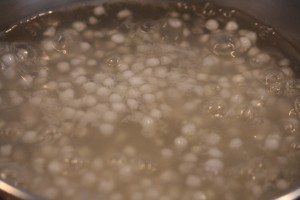
- Stir occasionally till the sago is cooked and becomes translucent. It took me around 20 mts to cook the sago.
- Once the sago is cooked strain it and wash with cold water 2 or 3 times. If you want the pudding to be gooey, wash it only once or for a firm texture wash more.
- ladle it in a wet muffin tray, and keep for setting in the fridge.
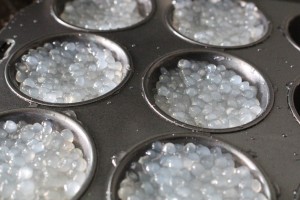
Stage 2
- Pour coconut milk into a small sauce pan with a pinch of salt. Adding salt is important to get the correct balance of sweetness when the dish is combined.
- Allow it to get warm, it takes only a few seconds.
- Keep on stirring and do not allow bubbles to form.
- Once the coconut milk is cooked transfer it to a small bowl, cool it and keep it in the fridge covered.
Stage 3
- In another small sauce pan add 4 table spoon of water and palm sugar along with crushed cardamom pods.
- Keep in medium – low fire.
- Make a sauce to the consistency of a string when poured. Do not over cook the sauce, it will harden once overcooked.
- Strain it and cool in the fridge.
When it is time for to have the dessert, DE mould the sago cakes, pour 1 table spoon of coconut milk sauce and jula melaka sauce over it and enjoy.
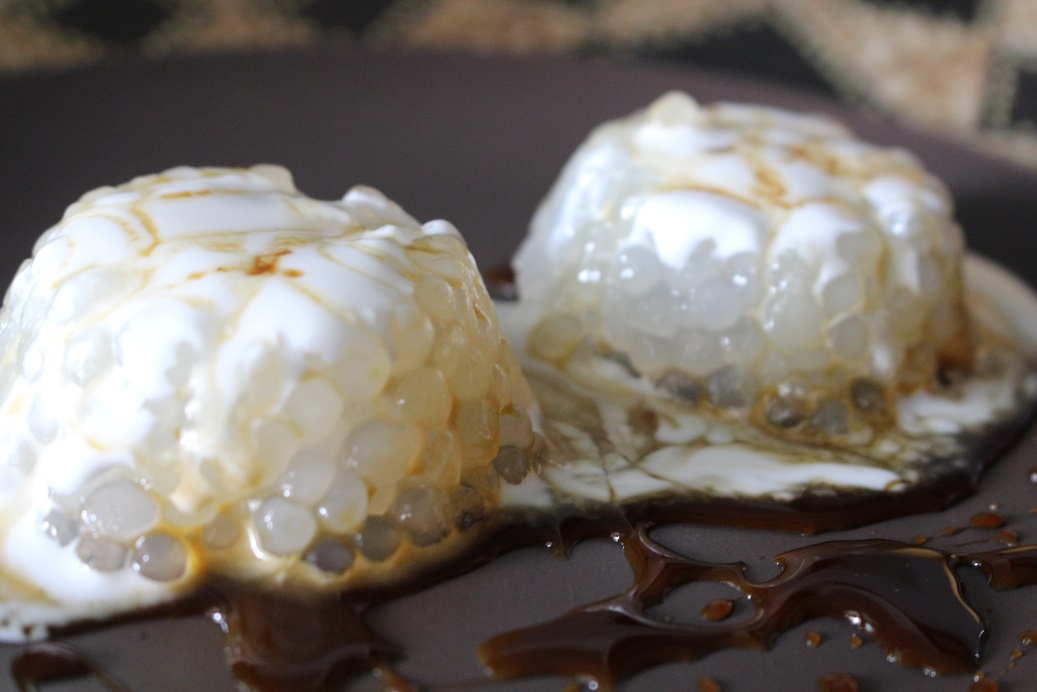

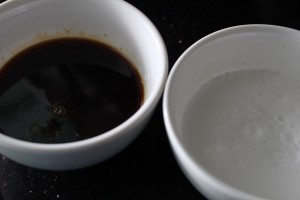

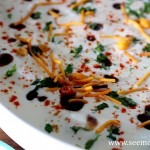

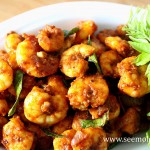
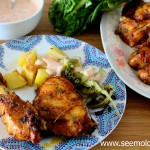

Comments by Seema Nair